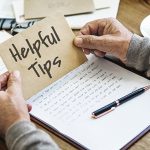4 Tips For Creating An Effective Brochure
Your brochure is a statement, the one opportunity you probably would get to impress a potential customer or client, this is one company document you want to make sure is done perfectly so that it serves as an effective marketing tool. Understanding the company and by extension, the product you are trying to portray to your audience is the first step towards creating an effective brochure, next, you would need to understand the purpose for which the brochure is being designed.
The Brochure Content
The brochure can be designed to play different roles and serve a host of functions and as such the content of your brochure should mirror the purpose of creating your brochure. It would be a big mistake for instance to create a brochure content intended to serve as a leave behind brochure (a leave behind brochure is designed to give more insight and in-depth details about a specific product or service that you are trying to sell to a target audience that you have interacted it, almost like sales pitch to an investor) following a presentation as a point of sale brochure (a concise brochure that provides potential customers with summarized information about your company or product).
The brochure content should also consider the audience (your brochure content should be created with the reader in mind), be organized (an organized brochure that is easy to relate with and navigate through is more likely to capture and retain the attention of the reader better), concise, error-free (errors and mistakes could lead to miscommunication) and unique (people come in contact with numerous brochures every time, your brochure content should be captivating and unique).
The Effective Brochure in Four Steps
- Create a Structure: the entire brochure should have a structure, in terms of the brochure design, the content, font style, choice of images, text and wordings, color theme and most importantly, the message you want to pass across to readers. Typically, the brochure would contain a beginning, middle and an end.
- Appeal to the Visual Senses: The text in your brochure is very important and should contain no typographical errors or grammatical mistakes, in addition, understand that a brochure is a visual tool, appealing to the visual senses by incorporating images, photographs and graphics that best represent your company or products helps to better capture the attention of readers. Take care not to make the brochure overly busy, however, so readers are not turned off.
- Add Contact Details and a Call to Action: a precise and simple call to action helps create the room for your audience to make a decision after going through your brochure and your contact information seals the deal, leaving your readers with little room to procrastinate.
- Thoroughly Proofread and Edit: while you want your brochure to contain all the information a potential client would be interested in knowing, you do not want to burden them with irrelevant information.
The aim when creating an effective brochure is to pass your message across to the right audience while creating a pleasurable experience that leaves them wanting more of your organization (and product or service).





